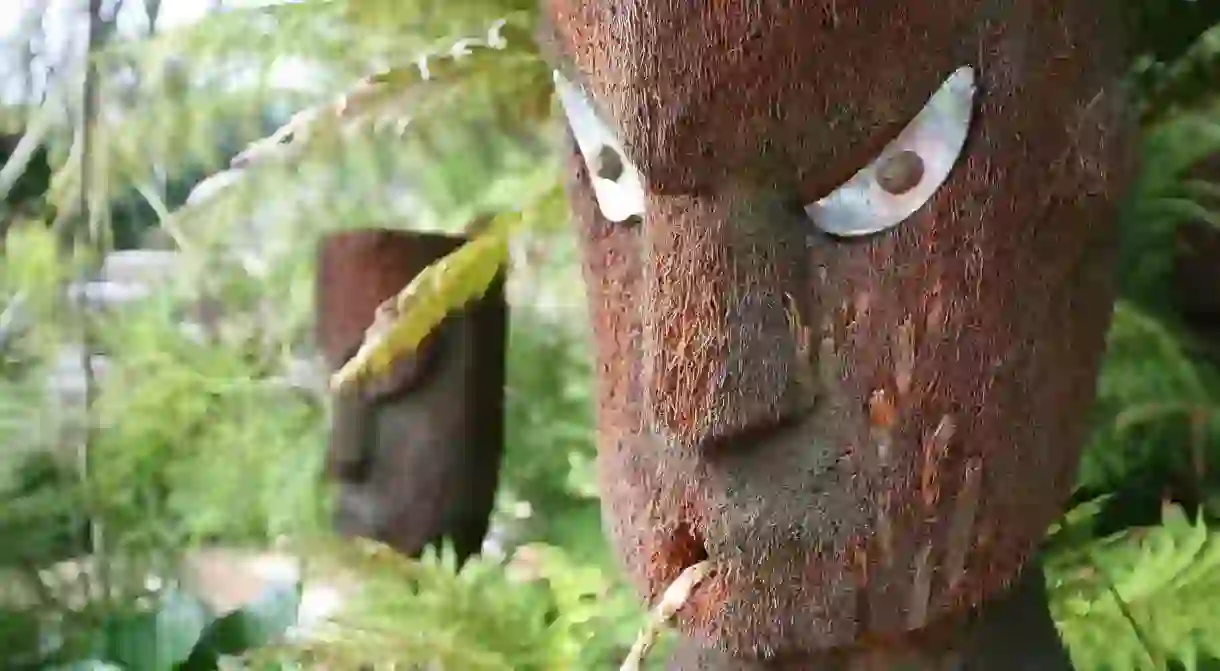The Best Culture and History Spots To Discover in Taupō, New Zealand

Nestled in the heart of New Zealand’s North Island is the town of Taupō. Home to the largest lake in the country, it has a lot to offer – from fishing and jet boating to sky diving and geothermal hot springs. For those in search of activities with a little less adrenaline, Taupō is also an area drenched in history and Māori heritage. Below are a handful of unmissable cultural hotspots.
The hidden face of Lake Taupō

In a rock alcove on the famous Lake Taupō, there is a face, which belongs to Ngatoroirangi, a legendary high priest who navigated the seas for Māori settlers to Aotearoa. Created by Matahi Whakataka-Brightwell, one of the last traditional marae-taught carvers in New Zealand, the carving took four years to produce. Although this modern Māori rock carving was completed in 1980, looking into Ngatoroirangi’s eyes provides you with a connection to the origins of New Zealand. Smaller sculptures representing tupuna (ancestors) and kaitiaki (guardians) of the local Māori tribe surround the 14-metre-tall (46-foot-tall) carving, including Horomatangi, the Māori water dragon that is said to inhabit the lake’s waters. Ask for directions to Mine Bay, and then cruise, sail or kayak to see the carvings for yourself.
The origin of the haka

To the south of the vast Lake Taupō is a smaller water body named Lake Rotoaira. Prized by the Māori as a prolific area for eel fishing, it was once the location of a small village. The remains of the Opotaka settlement can be explored by the water’s edge. From artefacts retrieved from the site, experts estimate that people occupied the village sometime around the 1820s to the 1840s – a time when the Māori and Europeans first had contact in the area.
Visit the Opotaka Historic Reserve to relive the birth of the famous New Zealand haka – an emotive war chant now most associated with pre-match performances of the All Blacks rugby team. With Lake Rotoaira on one side and swamps on the other, Opotaka was an effective fortress, and it was here that Te Rauparaha, chief of the Ngāti Toa Māori tribe, sought refuge around 1820. During this concealment, the “Ka mate” haka was born as a war chant to be muttered at pursuing enemies.
The final battleground

Modern New Zealand was largely shaped by a series of battles across the country in the 19th century, collectively known as the New Zealand Wars. Conflict over sovereignty and land resulted in major clashes between Māori tribes and government forces. Not far from Taupō is Te Pōrere Redoubt, the site of the last major battle of the wars, which took place in October 1869. Today, you can still see the forts crafted out of the earth, forming intricate passages. This defensive foothold was the brainchild of Māori prophet and warrior Te Kooti, and its structure echoes the construction techniques used by the British military. With informative signage, delve into the facts as you walk around the structure. You may also be treated to stunning views of the volcanic Mount Tongariro.
Taupō Museum

Round off your cultural excursion with a trip to the local museum. Here you can meet with Ruaumoko, the god of seasons, volcanoes and earthquakes, as well as enter a traditional Māori meeting house and even hop aboard a Kiwiana Caravan, adorned with memorabilia from the 1950s and ’60s. One of the museum’s most prized possessions is a 15-metre (49-foot) waka canoe, carved from the trunk of a single, native totara tree. This piece is on display in the Tuwharetoa Gallery – an area dedicated to the history of the local iwi.













